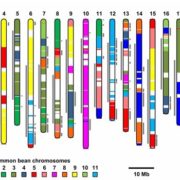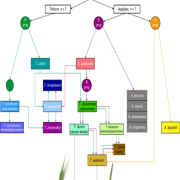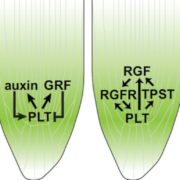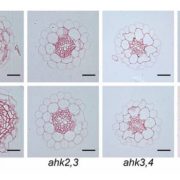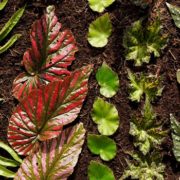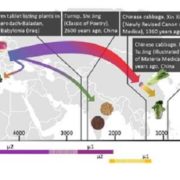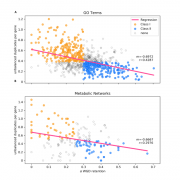The plastid genome in Cladophorales green algae is encoded by hairpin chromosomes ($)
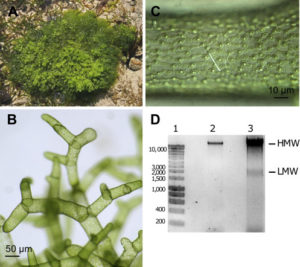 Plastids, the cellular sites for light reaction of photosynthesis, have a reduced genome which is circular and double stranded, ranging in the size from about 100 to 200 Kb. Some exceptions to this circular nature of plastid genomes are found in some groups of phytoplanktons, namely dinoflagellates, and as described in this work, Cladophorales green algae. Cortona et al. describe the highly divergent plastid genome of Boodlea composita which is entirely fragmented into hairpin chromosomes (single-stranded DNA folded back onto itself). The authors performed high-throughput short and long DNA and RNA sequencing, which resulted in a robust dataset of chloroplast protein-encoding genes on ~1 to 7 Kb DNA contigs with GC-enriched regions. The authors propose the contigs correspond to ssDNA that folds into hairpin chromosomes. Upon analysis of nine additional Cladophorales species, this fragmented chloroplast genome is seen to be a common feature of this group. (Summary by Amey Redkar) Curr Biol. 10.1016/j.cub.2017.11.004
Plastids, the cellular sites for light reaction of photosynthesis, have a reduced genome which is circular and double stranded, ranging in the size from about 100 to 200 Kb. Some exceptions to this circular nature of plastid genomes are found in some groups of phytoplanktons, namely dinoflagellates, and as described in this work, Cladophorales green algae. Cortona et al. describe the highly divergent plastid genome of Boodlea composita which is entirely fragmented into hairpin chromosomes (single-stranded DNA folded back onto itself). The authors performed high-throughput short and long DNA and RNA sequencing, which resulted in a robust dataset of chloroplast protein-encoding genes on ~1 to 7 Kb DNA contigs with GC-enriched regions. The authors propose the contigs correspond to ssDNA that folds into hairpin chromosomes. Upon analysis of nine additional Cladophorales species, this fragmented chloroplast genome is seen to be a common feature of this group. (Summary by Amey Redkar) Curr Biol. 10.1016/j.cub.2017.11.004


